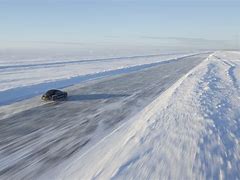On a thrilling boat ride through the Arctic Ocean, a group of scientists embarks on a mission towards Blomstrandbreen, an impressive 18-km-long glacier nestled in Svalbard, an island perched at 79 degrees north in the Arctic. As the boat approaches, navigating through car-sized chunks of ice freshly calved from the glacier, a symphony of melting ice fills the air – reminiscent of a chorus of dripping taps accompanied by crackling sounds akin to popcorn in a microwave.
“That sound is the air bubbles in the ice escaping as it melts,”
explains Dorothea Moser, an ice core scientist at the British Antarctic Survey.
“The air is probably nearly 200 years old. It’s from the Victorian times.”
The trapped air bubbles within glacial ice serve as time capsules holding valuable insights into Earth’s historical atmospheric composition. These bubbles offer crucial data to scientists about past carbon dioxide levels and climate conditions. However, with glaciers rapidly disappearing due to climate change, this precious information is under threat.
Glaciers act as natural record-keepers of our planet’s climatic history. Layers of snow compacted over centuries form glaciers containing vital information such as chemical compositions and dust particles that provide indirect records of past climates – known as “proxy data.
” Researchers retrieve this invaluable data by drilling and extracting ice cores from glaciers.
Moser and her team are urgently investigating how climate change impacts these crucial archives stored within glacial ice and if there are ways to preserve this irreplaceable information before it vanishes forever. The rapid retreat of glaciers worldwide due to rising temperatures poses a significant risk to these invaluable records.
“
Glaciers are like libraries holding volumes of Earth’s history,” Moser elaborates.
“We’re racing against time to decipher and safeguard these vital clues before they’re lost.”
The accelerated meltdown of glaciers, particularly marine-terminating ones like Blombstrandbreen facing warm ocean waters directly at their terminus, poses imminent threats. The increase in global temperatures and warming oceans exacerbates glacier melt rates and leads to more frequent calving events.
Experts warn that exceeding 1.5 degrees Celsius above pre-industrial levels could result in half of the world’s glaciers disappearing by century-end.
Svalbard’s thousands of glaciers face heightened vulnerability amidst its status as Earth’s fastest-warming region – experiencing seven times faster warming than global averages. This alarming trend has spurred urgent calls for preserving ice cores containing critical climate data while possible.
However, rapid glacier melting has introduced challenges such as meltwater intrusion deep into ice cores, potentially washing away compounds and distorting preserved climate signals.
“If you imagine an ice core like a book containing important information… what is happening is almost like someone spilling tea all over its pages,”
Moser illustrates.
Efforts are underway as researchers strive to salvage pertinent data from affected ice cores despite mounting obstacles caused by accelerated melting.
Moser conducts on-site experiments atop Arctic glaciers mimicking meltwater impact by introducing dyed liquid into surface snow layers for observation.
These initiatives aim to unravel how meltwater interacts with glacial structures and affects preserved climate details within affected areas.
“I’m determined to demonstrate that we can still extract valuable insights,” affirms Moser optimistically.
Documenting firsthand accounts aboard boats drifting alongside calved glacier chunks evokes poignant reflections on landscapes evolving swiftly due to human-induced climate shifts.
Expertly capturing this rapid transformation serves not only scientific purposes but also resonates emotionally with researchers witnessing nature’s dramatic changes unfold.
“Any scientific observation can have an emotional counterpoint,” reflects Moser solemnly.
As she navigates landscapes marred by climate change impacts firsthand – observing retreating glaciers once teeming with beauty – she contemplates humanity’s role in combating environmental crises amid feelings often described as eco-anxiety.
Despite grappling with profound ecological changes unfolding before her eyes,
Moser remains resolute about humanity’s capacity for positive action amidst looming environmental challenges.
“The urgency is undeniable; yet we possess agency,” Moser asserts hopefully.
This sense of agency fuels her determination while offering glimpses of optimism amid pressing environmental concerns.
Carbon Brief embarked on this journey in September 2024 alongside dedicated researchers striving to safeguard our planet’s fragile climatic heritage.

